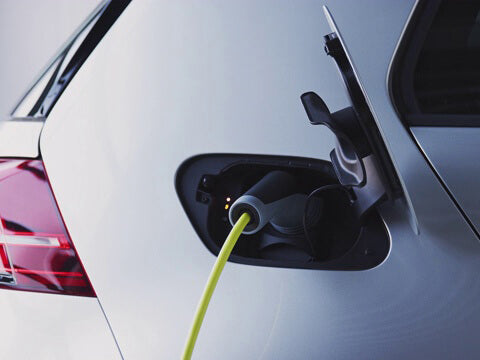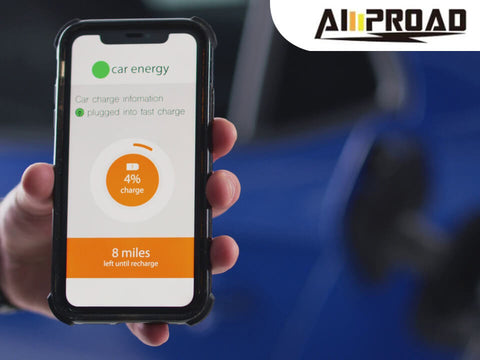
Embarking on the journey of electric vehicle (EV) ownership comes with a promise of sustainability and efficiency, but it also presents unique challenges in the realm of charging infrastructure. As the world shifts towards greener transportation options, understanding and addressing these challenges becomes paramount. From the availability and accessibility of charging stations to concerns about charging speed, range anxiety, and the environmental impact of charging, EV owners encounter various obstacles that require innovative solutions. In this article, we delve into the complexities of EV charging, examining the hurdles that both drivers and policymakers face in establishing a robust charging infrastructure. By shedding light on these challenges, we aim to pave the way for a more seamless and sustainable transition to electric mobility.
Infrastructure
Is the current EV charging infrastructure sufficient to meet the growing demand for electric vehicles?
The rapid adoption of electric vehicles (EVs) poses a significant challenge to the existing charging infrastructure. While progress has been made in expanding charging networks, the current infrastructure may struggle to keep pace with the surging demand for EVs. As more drivers switch to electric vehicles, the need for a robust and reliable charging infrastructure becomes increasingly pressing.
Are there enough charging stations available, especially in residential areas and along highways?
One of the primary concerns regarding EV charging infrastructure is the availability of charging stations, particularly in key locations such as residential areas and along highways. While urban centers often boast a relatively dense network of charging stations, rural and suburban areas may face shortages. Moreover, ensuring sufficient coverage along major highways and interstates is essential to support long-distance travel for EV owners.
How accessible are charging stations for EV owners, and what improvements are needed to enhance accessibility?
Accessibility is another crucial aspect of EV charging infrastructure. While many charging stations are located in convenient areas such as shopping centers and parking lots, accessibility issues still persist. Factors such as parking availability, charging station visibility, and ease of use can impact the accessibility of charging infrastructure. Additionally, the availability of different charging connectors and payment methods can influence accessibility for EV owners.
Improvements are needed to enhance the accessibility of charging stations for all EV owners. This may include increasing the number of charging stations in underserved areas, implementing standardized signage and labeling for easy identification, and streamlining the payment process. Furthermore, investing in smart charging technologies and infrastructure upgrades can optimize charging station utilization and improve the overall charging experience for EV owners.
Charging Speed and Technology
How fast is the charging speed of existing EV chargers, and what impact does it have on the convenience of EV ownership?
The charging speed of EV chargers varies depending on the type of charger. Level 1 EV chargers, which typically use a standard household outlet, provide the slowest charging speed, suitable for overnight charging. In contrast, Level 2 EV charger, commonly found in residential and commercial settings, offer faster charging speeds and can fully charge an EV in a matter of hours. Tesla destination chargers are another popular option, providing moderate charging speeds at locations such as hotels and restaurants. DC fast charging stations, also known as fast chargers, offer the fastest charging speeds and are ideal for quick top-ups during long journeys.
The charging speed of EV chargers significantly impacts the convenience of EV ownership. Faster chargers allow EV owners to recharge their vehicles more quickly, reducing downtime and enabling more flexible travel plans.
Are there advancements in charging technology that can address the issue of long charging times?
Advancements in charging technology are continuously being made to address the issue of long charging times. For example, researchers are developing improved battery chemistries and charging algorithms to enhance charging efficiency and reduce overall charging times. Additionally, the deployment of DC fast charging networks and the expansion of high-power charging capabilities are helping to significantly reduce charging times for EVs.
What role do fast chargers, wireless charging, and smart charging solutions play in overcoming charging challenges?
Fast chargers, such as DC fast charging stations, play a crucial role in overcoming charging challenges by providing rapid charging capabilities, allowing EV owners to recharge their vehicles quickly while on the go. Wireless charging technology eliminates the need for physical cables, offering added convenience and ease of use for EV owners. Smart charging solutions, including vehicle-to-grid (V2G) technology and demand response programs, help optimize charging schedules and manage electricity demand, ultimately enhancing the efficiency and reliability of EV charging infrastructure.
Range Anxiety
What is range anxiety, and how does it affect EV adoption rates?
Range anxiety refers to the fear or concern that an electric vehicle (EV) will run out of battery charge before reaching its destination or a charging station. This psychological barrier can significantly impact EV adoption rates, as potential buyers may perceive limited range as a major drawback of electric vehicles. Range anxiety can deter consumers from making the switch to EVs, particularly if they rely heavily on their vehicles for daily commuting or long-distance travel.
How can improvements in battery technology and charging infrastructure alleviate range anxiety among EV owners?
Improvements in battery technology, such as increased energy density and faster charging capabilities, can help alleviate range anxiety among EV owners. Advanced lithium-ion batteries with higher energy densities enable EVs to achieve longer driving ranges on a single charge, reducing the frequency of charging stops and mitigating range anxiety. Additionally, the expansion of charging infrastructure, including the deployment of fast chargers and the integration of smart charging solutions, provides EV owners with more convenient access to charging stations, thus reducing concerns about running out of battery power while on the road.
What strategies can be implemented to educate consumers about the realistic range capabilities of electric vehicles?
Educating consumers about the realistic range capabilities of electric vehicles is essential for dispelling misconceptions and alleviating range anxiety. Automakers and EV manufacturers can provide transparent and accurate information about the driving range of their vehicles under various conditions, including factors such as driving speed, weather, and terrain. Furthermore, outreach campaigns, educational materials, and test drive events can help consumers gain a better understanding of EV performance and range, empowering them to make informed decisions about EV adoption. By addressing range anxiety through education and technological advancements, the EV industry can accelerate the transition to sustainable transportation and promote widespread adoption of electric vehicles.
Cost and Affordability
Transitioning to electric vehicles (EVs) offers numerous environmental and economic benefits, but cost and affordability remain significant considerations for consumers. Let's explore the factors influencing EV charging costs and measures to make EV charging more accessible:
Are EV charging costs competitive with traditional fueling options, and what factors contribute to the overall cost of charging an EV?
EV charging costs vary depending on factors such as electricity rates, charging infrastructure, and vehicle efficiency. In many cases, EV charging can be more cost-effective than traditional fueling options, especially when charging at home using off-peak electricity rates. Factors contributing to the overall cost of charging an EV include electricity prices, charging speeds, and any additional fees associated with public charging networks.
How can policymakers and industry stakeholders work together to make EV charging more affordable for consumers?
Policymakers and industry stakeholders play a crucial role in making EV charging more affordable for consumers. By implementing incentives such as tax credits, rebates, and grants, policymakers can reduce the upfront costs of EV ownership and incentivize the installation of home charging infrastructure. Industry stakeholders can also collaborate to develop innovative financing solutions, such as leasing programs and subscription-based charging services, to make EV charging more accessible to a wider range of consumers.
Are there incentives or subsidies available to encourage the installation of charging infrastructure and promote EV adoption?
Yes, various incentives and subsidies are available to encourage the installation of charging infrastructure and promote EV adoption. These incentives may include financial incentives for installing home charging stations, grants for deploying public charging infrastructure, and tax credits for purchasing electric vehicles. Additionally, some jurisdictions offer preferential parking and toll incentives for EV owners to further incentivize adoption and support the growth of electric mobility.
AMPROAD Portable EV Charger: AMPROAD offers a versatile solution with its level 1 and level 2 dual-use portable EV charger. This compact and efficient charger provides EV owners with the flexibility to charge their vehicles at both standard household outlets (level 1) and dedicated EV charging stations (level 2). With features designed for convenience and reliability, AMPROAD's portable EV charger ensures that EV owners can enjoy affordable and accessible charging options wherever they go.
Addressing Challenges and Shaping the Future of EV Charging
In closing, the key challenges for EV charging include the adequacy of charging infrastructure, charging speed, range anxiety, cost, and environmental impact. To overcome these challenges, steps such as expanding charging networks, improving battery technology, implementing supportive policies, and educating consumers about EV capabilities are crucial. Technological advancements, including faster charging solutions and smart grid integration, can enhance the efficiency and accessibility of EV charging. Policy interventions, such as incentives for charging infrastructure deployment and renewable energy integration, are essential for promoting EV adoption. Additionally, raising consumer awareness about the benefits of EVs and addressing misconceptions about charging capabilities can encourage wider acceptance and uptake of electric mobility. Together, these efforts will shape a future where EV charging is seamless, affordable, and sustainable.
FAQs / People Also Asked
Q: What are the main challenges faced in EV charging?
A: The main challenges in EV charging include the adequacy of charging infrastructure, charging speed, range anxiety, cost, and environmental impact.
Q: How can the charging infrastructure be improved to meet the growing demand for EVs?
A: Improving the charging infrastructure involves expanding charging networks, deploying fast chargers, enhancing accessibility, and integrating smart charging solutions.
Q: What can be done to address range anxiety among EV owners?
A: Range anxiety can be alleviated through advancements in battery technology, expansion of charging infrastructure, and consumer education about realistic range capabilities.





